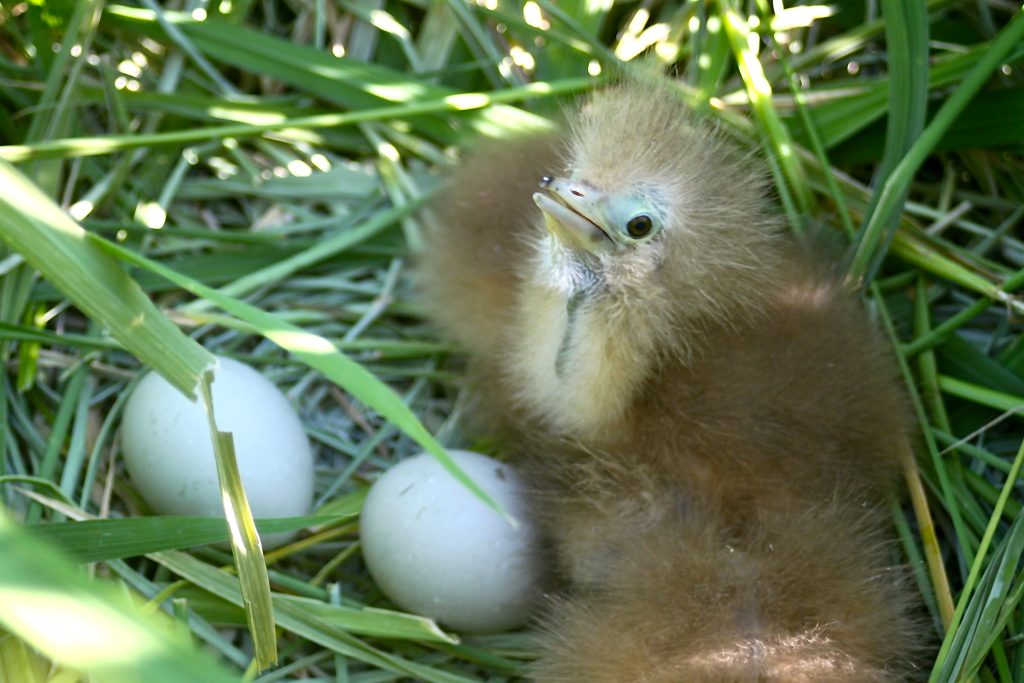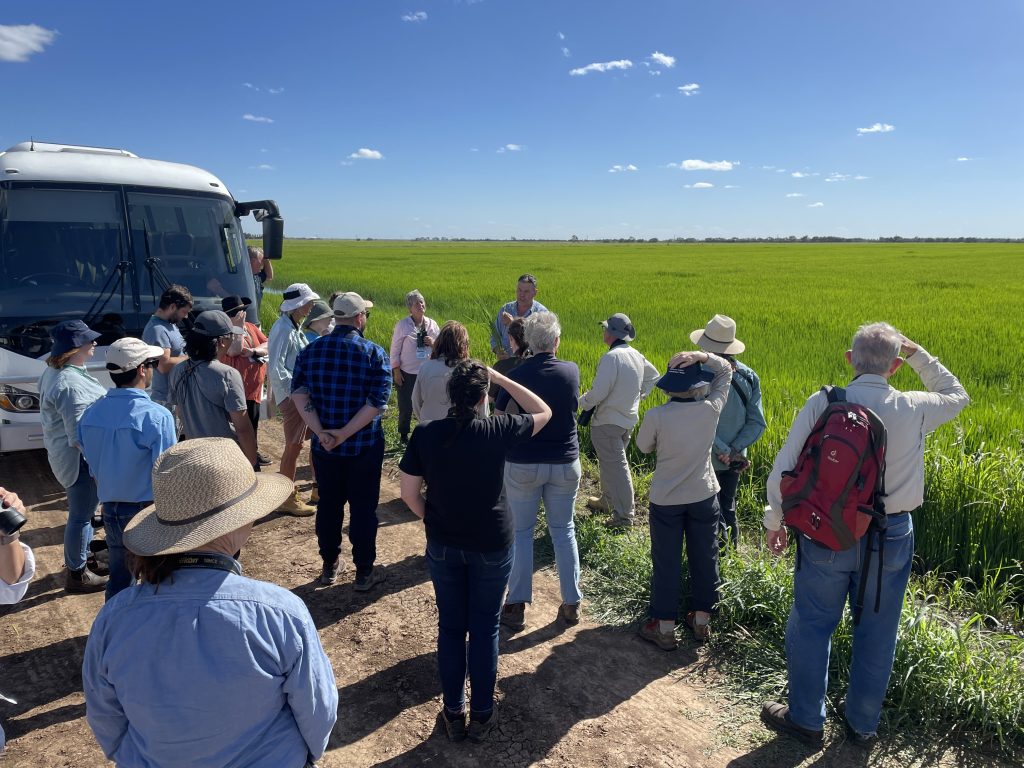
The Bitterns in Rice Project is about farming and wildlife conservation working together.
Since 2012, we have been raising awareness of the plight of Australia’s Bunyip Bird – the endangered Australasian Bittern – and uncovering its well-guarded secrets. We now know that the rice fields of the New South Wales Riverina support the largest known breeding population of the species, with 500-1000 mature individuals in most years. Remarkably, this represents about 60% of the national population and 40% of the global total.
Our vision is to see bitterns and other significant wildlife, like the Southern Bell Frog and Australian Painted-snipe, prosper alongside rice farming. With the strong support of the Riverina’s rice industry, we are demonstrating that food production and wildlife conservation can go hand in hand. As global demand for food continues to grow, the need to better incorporate biodiversity into agriculture also grows. Dedicated conservation areas like national parks are central yet inadequate in conserving wildlife, and the role of agricultural habitats in complementing traditional conservation areas is increasingly recognised. Much of the land and water in the Murray-Darling Basin is managed for either agricultural production or the environment, while our work is focussed on co-management and dual outcomes.

Attendees at the National Bittern Conservation Summit in 2023 got to see firsthand the bittern habitat values of rice fields as agricultural wetlands.
Five key highlights from our work so far:
- Environment-Agriculture partnerships and engagement with farmers, industry, government, universities, community groups and NGOs, including booklets, seminars, field days, tours and social media. Bitterns in rice has become symbolic of the potential for wildlife conservation within Australian agricultural habitats.
- Scientific research on bittern ecology and conservation in rice fields with Charles Darwin University and the Threatened Species Recovery Hub, published in top international journals. Development of Bittern-friendly rice growing guidelines.
- A bittern-friendly rice growing incentive program from 2019-2023 across 3630 hectares, funded by the Australian Government’s National Landcare Program through Riverina Local Land Services.
- A crowd-funded satellite tracking program to see where bitterns disperse to when the rice season ends and which wetlands they rely on during the non-breeding season.
- A National Bittern Conservation Summit in 2023, with Riverina LLS, attended by 120 people from Western Australia to New Zealand.
The Bitterns in Rice Project is a collaboration involving many organisations. It is led by the Rice Growers’ Association of Australia and Murray Wildlife, with key support from Riverina Local Land Services. The following organisations have made significant contributions: Australian Government, Birdlife Australia, Coleambally Irrigation, SunRice, Charles Darwin University, Murrumbidgee Field Naturalists Club, Rural Industries Research and Development Corporation, Murray Local Land Services, Murray Irrigation, Murrumbidgee Irrigation, Threatened Species Recovery Hub, Murrumbidgee and Coleambally Landcare, Norman Wettenhall Foundation, and New South Wales DCCEEW.
Many people have contributed over the years and we’re grateful for their efforts. The current Bitterns in Rice Project Working Group consists of:
Matt Herring, Murray Wildlife
Neil Bull, Ricegrowers’ Association of Australia
Anna Wilson, Riverina Local Land Services
Mark Groat, Rice Extension
Michele Groat, Commonwealth Environmental Water Office
Chris Purnell, Birdlife Australia
Mark Robb, Robb Environmental Management Services
Stephen Garnett, Charles Darwin University
Please feel free to get in contact with us if you’d like more information:
Email : info@bitternsinrice.com.au
Bitterns in Rice Project
C/O Ricegrowers’ Association of Australia
57 Yanco Avenue, Leeton NSW 2705 Australia
Matt Herring – 0428 236 563
mherring@murraywildlife.com.au
Neil Bull – 0428 603 557
nbull@rga.org.au
 For regular updates, you can also like The Bitterns in Rice Project on Facebook
For regular updates, you can also like The Bitterns in Rice Project on Facebook
